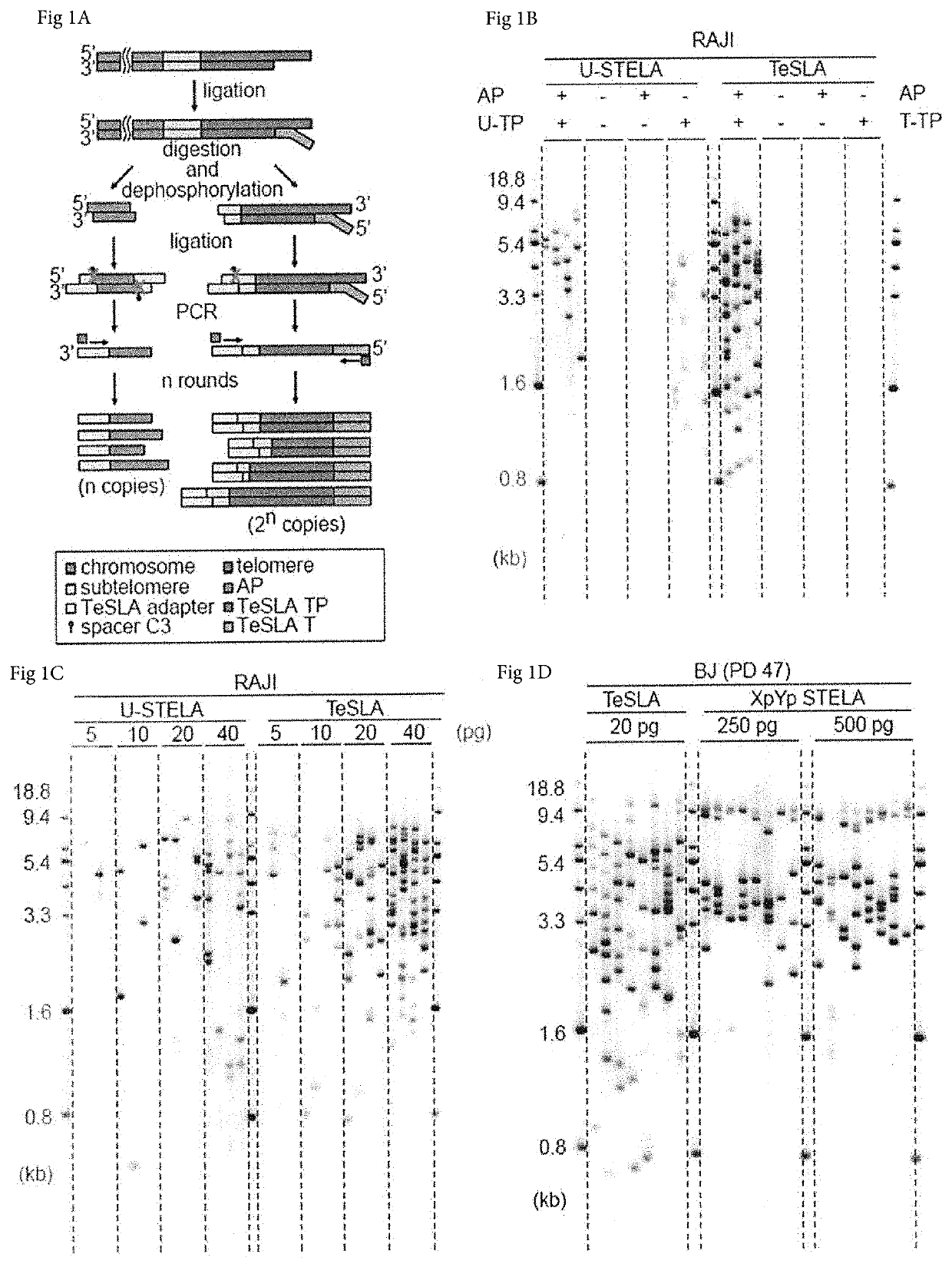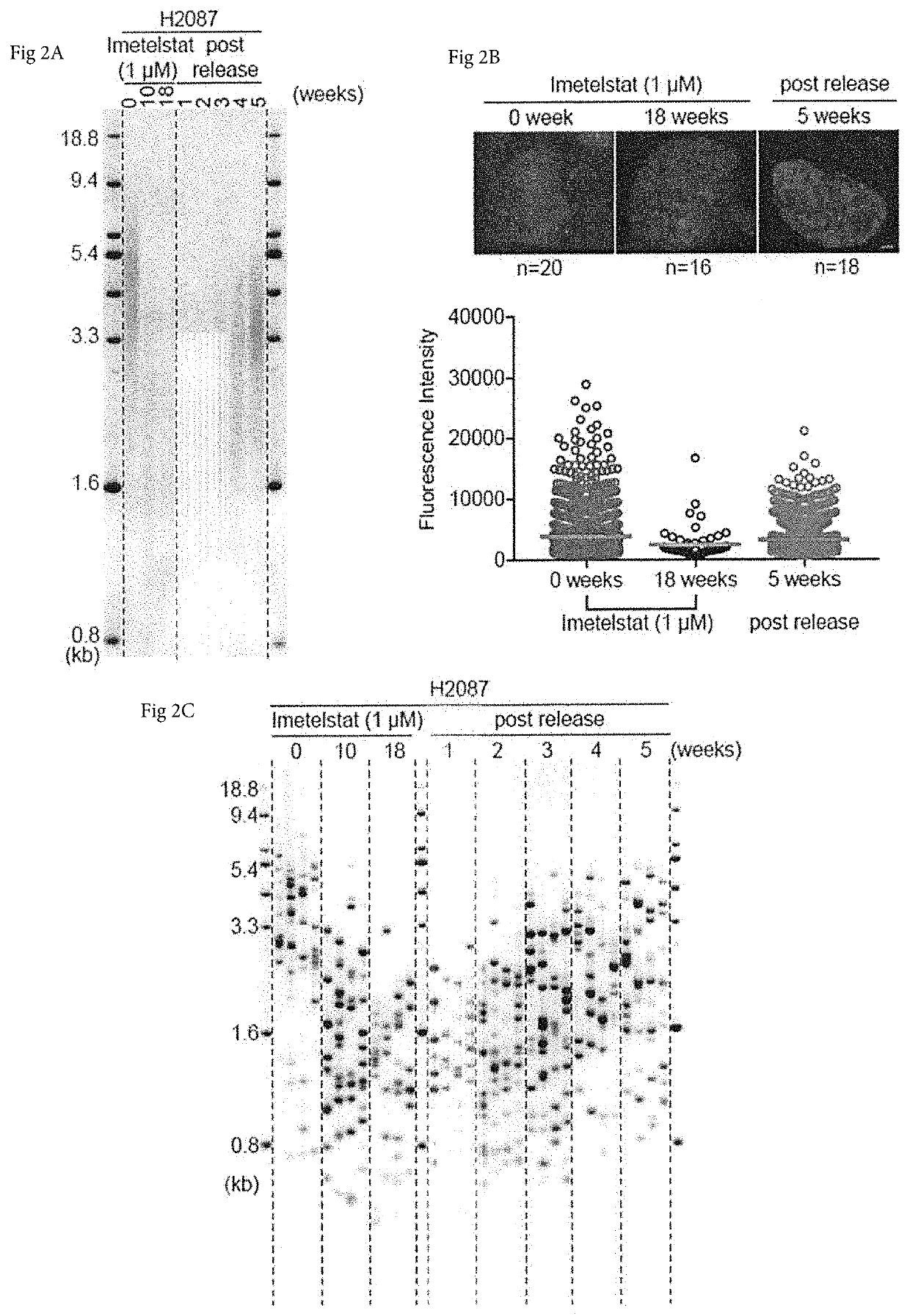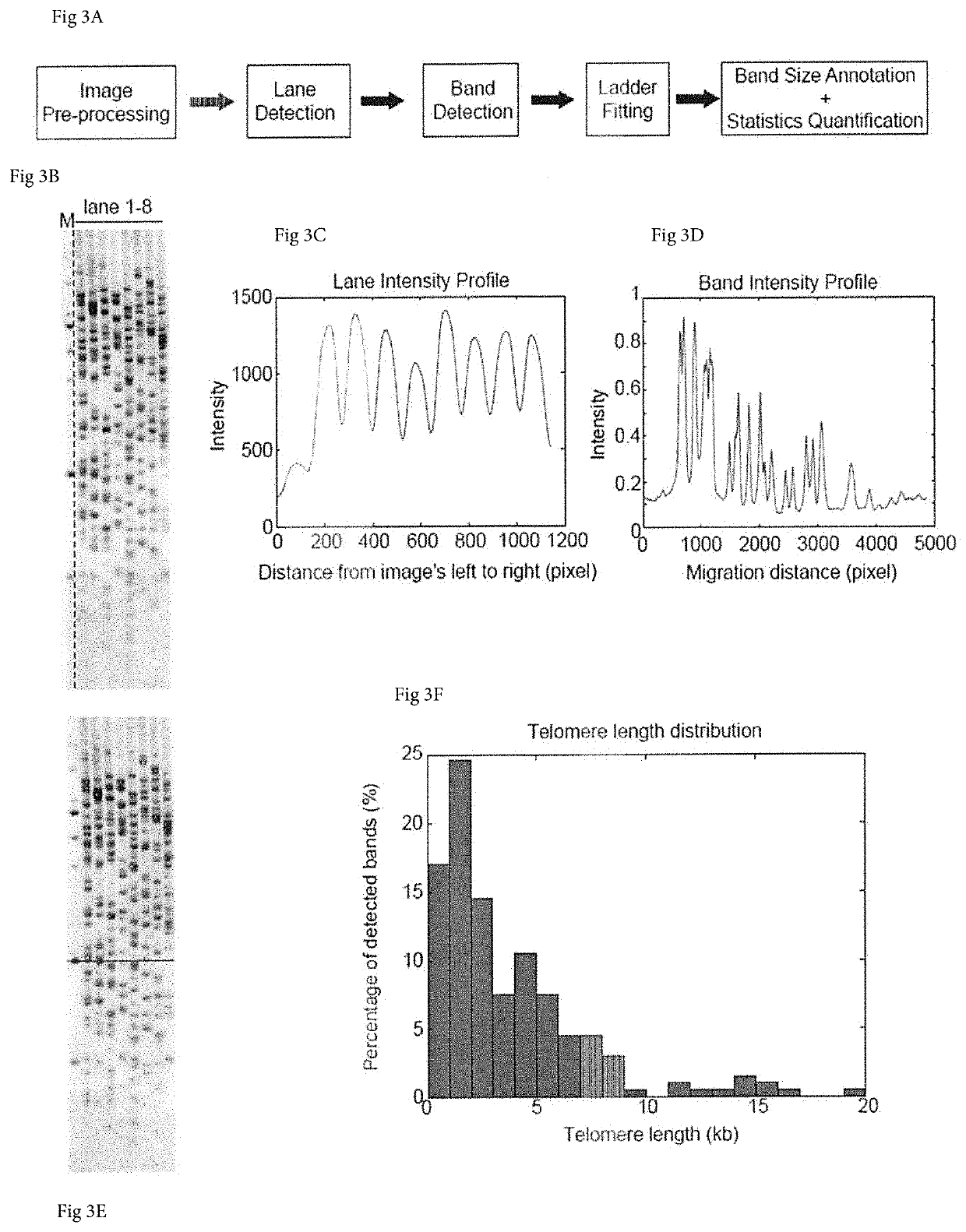Method to measure the shortest telomeres
a telomere and telomere technology, applied in the field of cell biology, molecular biology, diagnostics, and medicine, can solve the problems of inability to quantify tl for cancer studies, inability to analyze non-dividing cells such as senescent cells or resting lymphocytes, and inability to quantify tl. sensitivity, efficiency and specificity increase
- Summary
- Abstract
- Description
- Claims
- Application Information
AI Technical Summary
Benefits of technology
Problems solved by technology
Method used
Image
Examples
example 1
TeSLA: A Method for Measuring the Distribution of the Shortest Telomeres in Cells and Tissues
[0050]Methods encompassed by the disclosure allow for more sensitive, efficient and specific for telomere length (TL) detection when directly compared to other methods for TL measurement. The methods may be used in combination with any other method, and in some cases may be used in combination with any imaging method, whether it is automated or not. As shown herein, one can detect telomere dynamics, especially for the shortest telomeres, in normal aging process, cancer, and telomere-related disorders in humans, for example. Also, one can apply the TeSLA method to different mammals such as mice, elephants, and bowhead whales to demonstrate the effectiveness of this improved technology.
Results
The Principle of TeSLA
[0051]A schematic presentation of the TeSLA method is shown in FIG. 1A. TeSLA is based on a ligation and PCR approach to detect amplified terminal restriction fragments which contain...
PUM
| Property | Measurement | Unit |
|---|---|---|
| length | aaaaa | aaaaa |
| genomic stability | aaaaa | aaaaa |
| size distribution | aaaaa | aaaaa |
Abstract
Description
Claims
Application Information
 Login to View More
Login to View More - R&D
- Intellectual Property
- Life Sciences
- Materials
- Tech Scout
- Unparalleled Data Quality
- Higher Quality Content
- 60% Fewer Hallucinations
Browse by: Latest US Patents, China's latest patents, Technical Efficacy Thesaurus, Application Domain, Technology Topic, Popular Technical Reports.
© 2025 PatSnap. All rights reserved.Legal|Privacy policy|Modern Slavery Act Transparency Statement|Sitemap|About US| Contact US: help@patsnap.com



